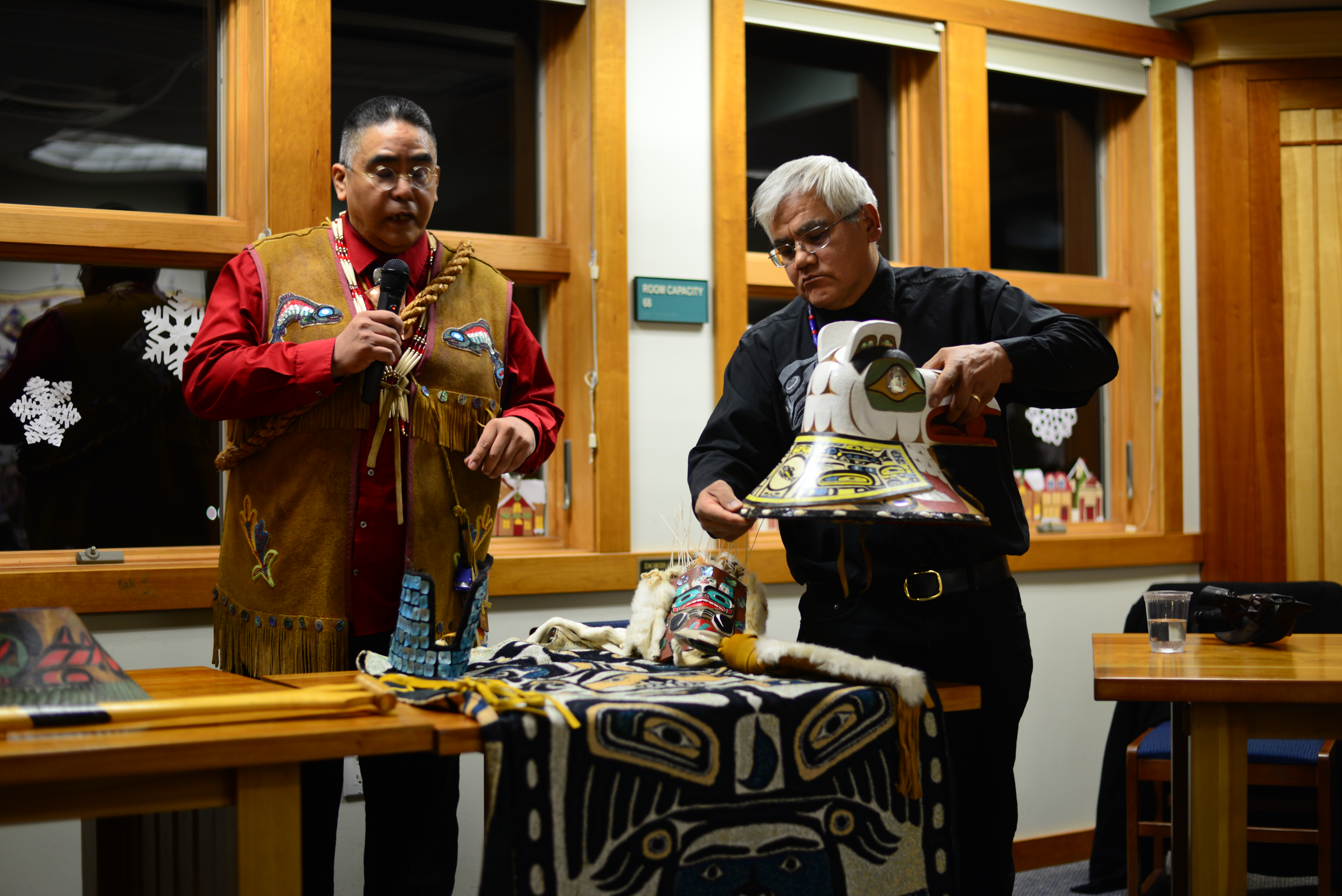
Chilkoot Indian Association members would like to see more Native art made by Native people for sale and on display in Haines.
And they’d like to see less Native-style art made by people who aren’t tribal members.
Five speakers at last week’s forum “Our Art is Our Voice” said they knew they were starting a tough conversation.
Their goal? Less “Native” art made by non-Native people sold and displayed in town.
“Counterfeit art, prominently displayed in Haines, does not and cannot reflect our culture,” Master Carver Wayne Price said. “The volume of artificial native art seen by visitors falsely represents our native traditions. We are making a stand today to defend our heritage from an invasion of counterfeit replacement.”
Representatives from the Chilkoot clan talked about how and why they’d like to see Native art approached differently in Haines, before opening the floor for community discussion.
Tribal member Ted Hart read a letter from Tlingit scholar X’unei Lance Twitchell, who lives in Juneau.
“There is no word for art in Tlingit,” Twitchell wrote. “Everything that was made was adorned with crests that were given to clans from the natural world and the spirit world.”
Because Tlingit designs convey meaning about Tlingit history and culture, he argued it’s inappropriate for non-indigenous artists to be drafting those messages.
“Non-indigenous peoples are encouraged to learn our languages, to understand how we live our lives, to share our culture with us, to learn about our art to the point that they are involved in the creation of monumental art like totem poles, wall screens, houses and canoes,” Twitchell wrote. “They should not, however, be the lead artists on such projects.”
Young Tlingit artist James Hart put it more simply.
“Don’t put up monuments that I can’t talk to,” Hart said.
Questions about Native art and authenticity aren’t new in Haines: art is big business here.
A 2015 study surveying 60 local artists estimated the town’s arts economy generates $2.1 million in spending each year.
More than 18 formline-style public art pieces are displayed in town, made by Native carvers, non-Native carvers and teams of both.
No one at the forum would identify specific pieces they’d like to see removed, saying they didn’t want to target individuals.
Chilkoot Indian Association tribal administrator Harriet Brouillette did remind the audience of the Indian Arts and Crafts Act of 1990, which makes it illegal to explicitly market art as “Native” or “Tlingit” if it wasn’t made by a tribal member.
But the law only penalizes people who lie about a piece’s origins.
It’s not illegal to use Northwest Coast-style designs without attribution, which frustrates tribal members, who respect Tlingit traditions in which clans own their designs.
Questions from the audience illustrated that frustration and showed there was gray area, for both Native and non-Native participants, about what was acceptable.
“I’m a furniture maker by training. I really appreciate the designs, particularly the rattles. And let’s just say, for example, I were to make one of those for myself, and someone were to ask me to make one for them I’m just making them for private individuals, I state that I am not native in any way shape or form,” audience member Chris Kelly said. “What would your opinion be?”
Ray Dennis, who described himself as the last member of the Chilkat Valley’s Lukaax.adi clan, said only claiming the rattles were made by a Native artist would bother him.
Brouillette had a different opinion.
“These are clan owned designs. They do not belong to you,” Brouillette said.
When asked about art made by non-Natives trained by master carvers, forum leaders didn’t give specific responses but said those were questions that needed to be figured out.
Brouillette mentioned the example of a Tsimshian apprentice training with a Tlingit master.
“That’s happening now,” Brouillette said. “It’s kind of a head-scratcher to me. How do you address that?”
Why is the subject of authentic art in Haines coming up now? Brouillette pointed to a cultural shift in the way Native art is perceived, even within Native communities.
“There is a renaissance happening with our younger artists,” Brouillette said. “And that’s helping our master artists gain a stronger voice. Our master artists, a couple of decades ago, wouldn’t have had an apprentice, because it wasn’t cool or OK to be Native.”
Though speakers mentioned drafting a policy or writing guidelines in the future, they didn’t float any concrete method to stop non-Native artists from working commercially in Haines.
This was just the beginning of a long conversation with the community, Price said.




